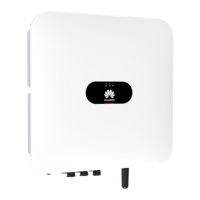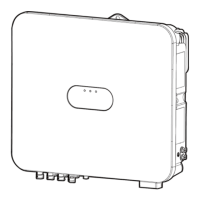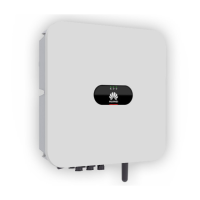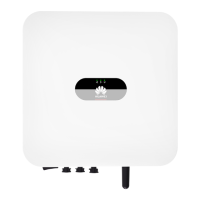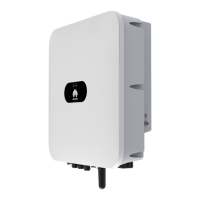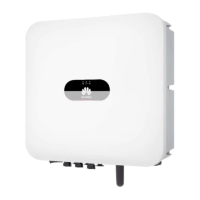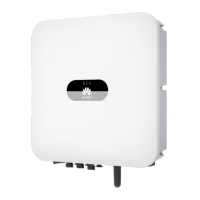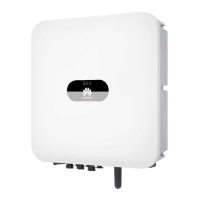(A) PV string (B) DC switch (C) SUN2000
(D) AC switch (E) ACDU (F) Smart Power Sensor
(G) Power grid (H) LUNA2000 (I) 4G Smart Dongle
(J) WLAN-FE Smart
Dongle
(K) Router (L) FusionSolar
management system
(M) FusionSolar app (N) Load (Q) SmartLogger
● The grid-tied ESS supports a maximum of three SUN2000-(2KTL-6KTL)-L1 inverters
(with batteries) cascaded. In this scenario, the inverters can be connected to the grid
only at the same phase and controlled only by a single-phase power meter. Grid
connection at dierent phases or using a three-phase power meter is not supported.
● Each L1/LC0/M1 can connect to a maximum of two ESSs, and each MB0 can connect to
a maximum of four ESSs. In the EMMA networking scenario, a maximum of three
inverters and twelve ESSs can be connected.
4.1.2 Setting the Grid-tied ESS Mode
The grid-tied ESS has three main working modes: Maximum self-consumption,
TOU (time-of-use), and excess fed to the grid.
Maximum Self-Consumption
● This mode applies to areas where the electricity price is high, or areas where
the FIT subsidy is low or unavailable.
● Excess PV energy is stored in batteries. When PV power is insucient or no PV
power is generated at night, batteries discharge to supply power to the loads,
improving the self-consumption rate of the PV system and the self-suciency
rate of residential energy, and reducing electricity costs.
● In this mode, Maximum self-consumption is selected. By default, the charge
cuto capacity is 100% and the discharge cuto capacity is 5% for Huawei
LUNA2000 batteries. For details about how to change the charge or discharge
cuto capacity, see 7.3 Battery Commissioning.
LUNA2000-(5-30)-S0
User Manual 4 Application Scenarios and Settings
Issue 15 (2024-01-12) Copyright © Huawei Digital Power Technologies Co., Ltd. 42

